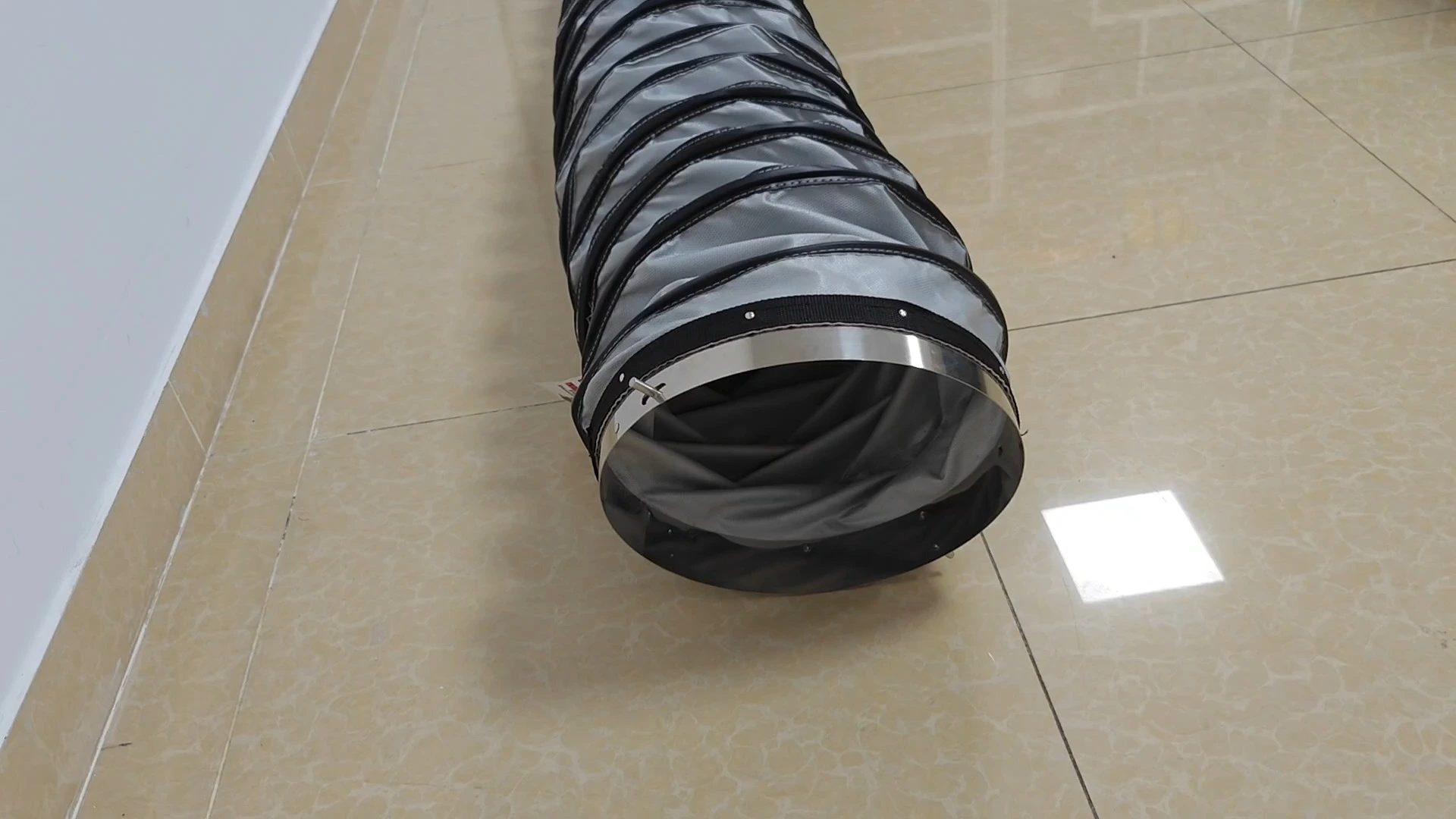high temperature flexible ducting for Portable Gas/Oil Indirect Fired Air Heaters NUOENWEI
Material & Construction:
High-temperature flexible ducts are usually made of heat-resistant synthetic materials such as silicone, polyester or fiberglass to ensure good stability and durability even in environments up to 400 degrees Celsius.
The outer layer is usually made of abrasion-resistant and UV-resistant materials to enhance its longevity and suitability.
Features:
High Temperature Resistance: withstands temperatures up to 500°C (some models even higher).
Flexibility: Flexible design for easy installation in limited or complex spaces.
Corrosion resistance: many high temperature ducts offer good chemical resistance.
Vibration damping: excellent vibration and noise damping properties.
high temperature flexible ducting for Portable Gas/Oil Indirect Fired Air Heaters
Offering excellent corrosion resistance and flexibility, high temperature flexible ducting can be easily installed in different layouts and environments, and is designed to efficiently transport the hot air produced by the heater to the desired area while safely venting the flue gases. This ducting ensures the efficient operation of the system and is an integral part of a portable heating solution. By using high-temperature flexible ducting, users can improve the overall performance and safety of their heaters.
Related Parameters
|
Material |
special high-temperature fiber coating,fiberglass |
|
total thickness |
0.45mm |
|
diameter |
100mm-1500mm |
|
Temperature Range |
- 45℃ to + 400 ℃ |
|
Color |
black,gray |
|
Feature |
Flexible, collapsible, easy storage |
|
MOQ |
5m |
Product Advantages
Product Advantages of High Temperature Flexible Ducting for Portable Gas/Oil Indirect Fired Air Heaters
1. High Temperature Resistance:
- Designed to withstand extreme temperatures (up to 500°C or more), ensuring safe and efficient heat transfer from the heater to the target area.
2. Flexibility and Versatility:
- The ducting is highly flexible, allowing for easy installation in tight or complex spaces, which is particularly beneficial for portable heating applications.
3. Durability:
- Made from robust materials that resist wear and tear, high-temperature ducting is built to last, even in demanding environments.
4. Corrosion and Chemical Resistance:
- Resistant to chemicals produced during the combustion process, it helps maintain structural integrity and performance over time.
5. Airflow Efficiency:
- Designed to optimize airflow, the ducting minimizes resistance, enhancing the overall heating efficiency of the system.
6. Lightweight Design:
- The lightweight nature of the ducting makes it easy to transport and install, aligning perfectly with the portable nature of the heaters.
7. Safety Features:
- Reduces the risk of overheating and other hazards by providing reliable containment of hot air, contributing to a safer operation.
8. Noise Reduction:
- Many high-temperature flexible ducts are engineered to dampen noise, creating a quieter environment while the heater is operating.
9. Ease of Maintenance:
- The materials used allow for straightforward cleaning and maintenance, helping to prolong the lifespan of the ducting and the heating system.
10. Cost-Effectiveness:
- By enhancing the efficiency and safety of portable heating systems, high-temperature flexible ducting can lead to lower operational costs over time.
These advantages make high-temperature flexible ducting an essential component for optimizing the performance and safety of portable gas/oil indirect fired air heaters. If you have further questions or need more insights, feel free to ask!
Application Scenario
High temperature flexible ducting, when used in conjunction with portable gas/oil indirect heating air heaters, can provide temporary heating for buildings, construction projects, and maintenance work under construction or remodeling. In addition, it can be used for ground thawing.
For ducted heaters, these units usually need to be ducted to deliver hot air to a specific area, catering for large spaces or scenarios where centralized heating is required. These types of heaters are usually equipped with an air duct system in order to efficiently distribute the hot air to more distant areas.
On the other hand, some heaters equipped with an exhaust system (especially oil or gas heaters) need to be connected to an exhaust duct in order to ensure that the exhaust gases are safely discharged and to prevent any impact on indoor air quality.
Frequently Asked Questions






